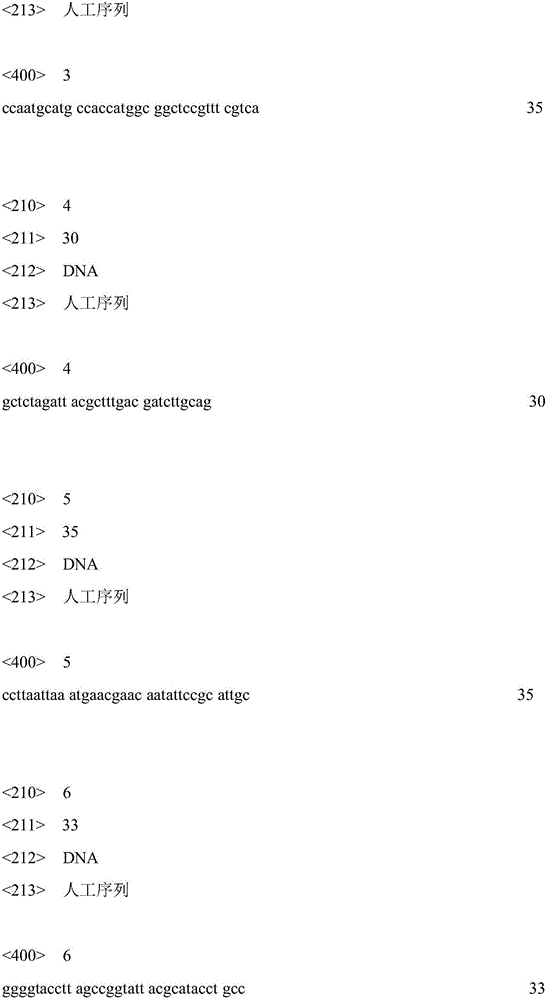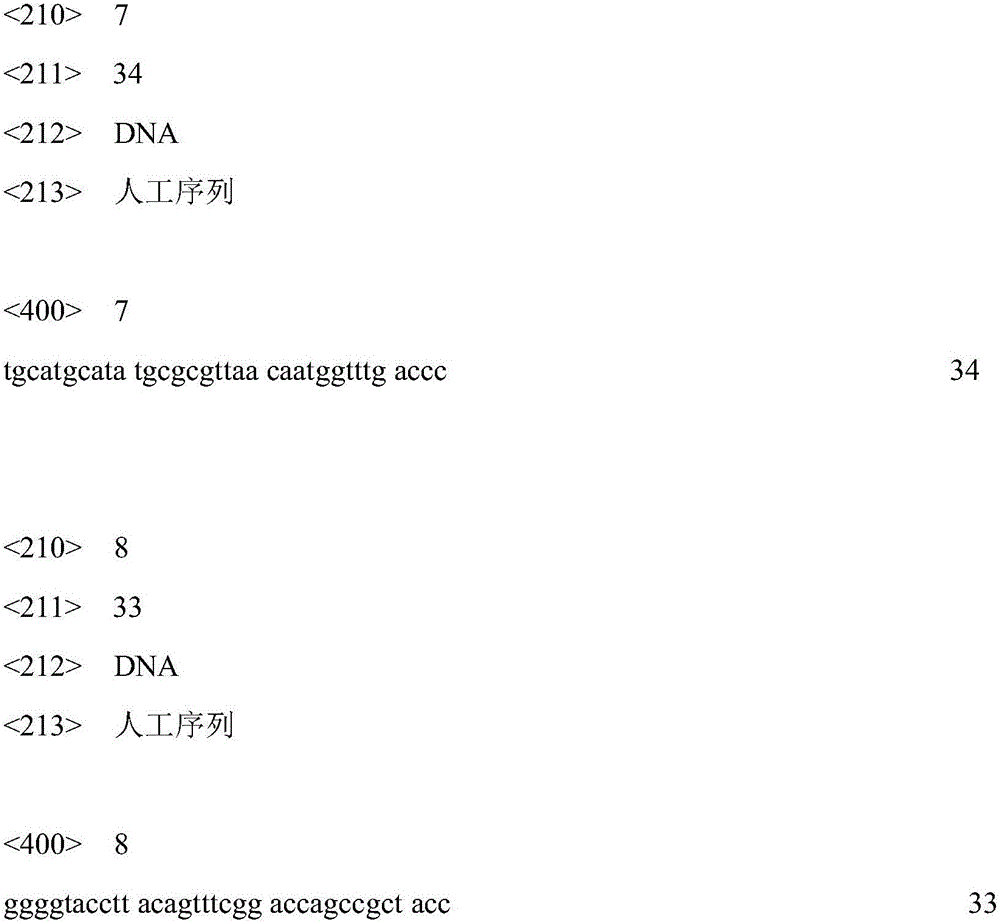Method for increasing carbon source utilization rate in aspergillus oryzae L-malic acid synthesizing process
A technology of Aspergillus oryzae and malic acid, applied in the field of genetic engineering, can solve the problem of less metabolic transformation of Aspergillus oryzae, and achieve the effects of simple method, improved conversion rate and reduced production cost
- Summary
- Abstract
- Description
- Claims
- Application Information
AI Technical Summary
Problems solved by technology
Method used
Image
Examples
Embodiment 1
[0039] Example 1 Protoplast transformation of Aspergillus oryzae and selection of transformants
[0040] The preparation and transformation methods of Aspergillus oryzae protoplasts are as follows:
[0041] For the preparation method of protoplasts, refer to the literature Brown, S.
[0042] H., Bashkirova, L., Berka, R., Chandler, T., Doty, T., McCall, K., McCulloch, M., McFarland, S., Thompson, S., Yaver, D., Berry, A.,2013.Metabolic engineering ofAspergillus oryzae NRRL3488for increased production of L-malic acid.Applied microbiology and biotechnology.97,8903-12.
[0043] For the method of protoplast transformation, refer to the literature Blumhoff, M., Steiger, M.G., Marx, H., Mattanovich, D., Sauer, M., 2013. Six novel constitutive promoters for metabolic engineering of Aspergillus niger. Applied microbiology and biotechnology. 97, 259-67.
[0044] The selected positive transformants were passed through the resistance plate several times to obtain a homozygous Aspergillus oryzae r...
Embodiment 2
[0045] Example 2 Overexpression of malate dehydrogenase mdh and pyruvate carboxylase pyc
[0046] According to the upstream and downstream sequences of Aspergillus oryzae mdh and pyc genes published on NCBI, primers were designed to construct malate dehydrogenase MDH and pyruvate carboxylase PYC expression vectors.
[0047] Table 1 Primers for amplifying mdh and pyc genes
[0048] name
Sequence (5’-3’)
Serial number
mdh3-1
CCAATGCATGCCACCATGGTCAAAGCTGGTGAGTTAG
SEQ ID NO:1
mdh3-2
GCTCTAGATTACTTTGGTGGTGGGTTCT
SEQ ID NO: 2
pyc-1
CCAATGCATGCCACCATGGCGGCTCCGTTTCGTCA
SEQ ID NO: 3
pyc-2
GCTCTAGATTACGCTTTGACGATCTTGCAG
SEQ ID NO: 4
[0049] Using Aspergillus oryzae genome as template, related genes were amplified by PCR. The method for extracting the genome of Aspergillus oryzae is the sky root plant genome extraction kit method. The amplified target gene and the above-mentioned vector plasmid pBg32 are both digested with fast digestion enzymes Nsi I and KpnI, and the ...
Embodiment 3
[0051] Example 3 Construction of pck and ppc gene heterologous expression vector
[0052] According to the upstream and downstream sequences of E. coli pck and ppc published on NCBI, primers were designed.
[0053] Table 2 Primers for amplification of pck and ppc genes
[0054] name
Sequence (5’-3’)
Serial number
ppc-1
CCTTAATTAAATGAACGAACAATATTCCGCATTGC
SEQ ID NO: 5
ppc-2
GGGGTACCTTAGCCGGTATTACGCATACCTGCC
SEQ ID NO: 6
pck-1
TGCATGCATATGCGCGTTAACAATGGTTTGACCC
SEQ ID NO: 7
pck-2
GGGGTACCTTACAGTTTCGGACCAGCCGCTACC
SEQ ID NO: 8
[0055] Using the genome of E. coli BL21 as a template, the relevant genes were amplified by PCR using the above primers. The fast-cutting enzymes pac I and Kpn I were used to double-cut the target gene and the vector pHg11, and the target gene was connected to the vector to obtain the expression plasmid pPHg2 of the ppc gene and the expression plasmid pPCg32 of the pyc gene. Then, the target fragment was obtained by double digestion with ...
PUM
 Login to View More
Login to View More Abstract
Description
Claims
Application Information
 Login to View More
Login to View More - R&D
- Intellectual Property
- Life Sciences
- Materials
- Tech Scout
- Unparalleled Data Quality
- Higher Quality Content
- 60% Fewer Hallucinations
Browse by: Latest US Patents, China's latest patents, Technical Efficacy Thesaurus, Application Domain, Technology Topic, Popular Technical Reports.
© 2025 PatSnap. All rights reserved.Legal|Privacy policy|Modern Slavery Act Transparency Statement|Sitemap|About US| Contact US: help@patsnap.com



